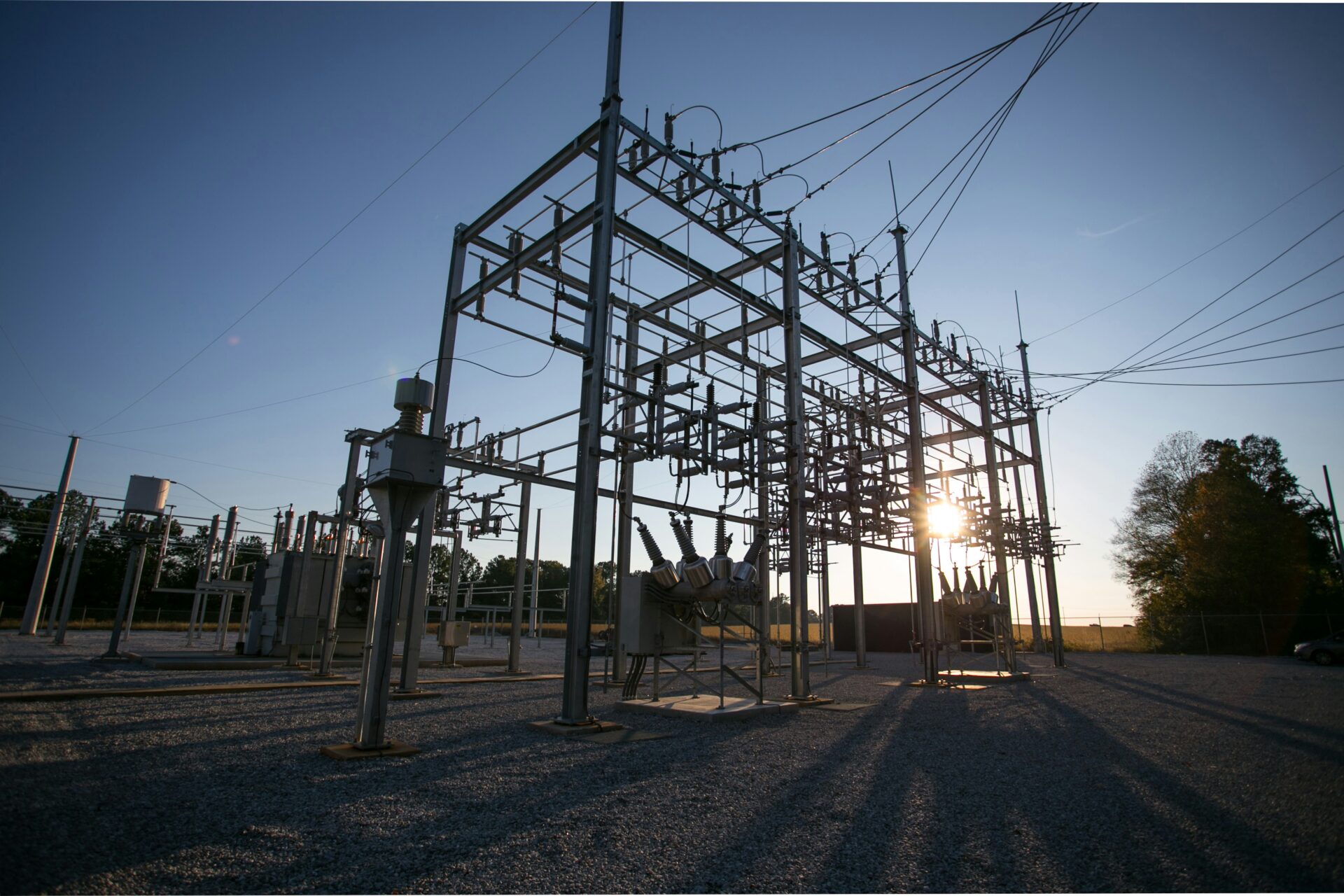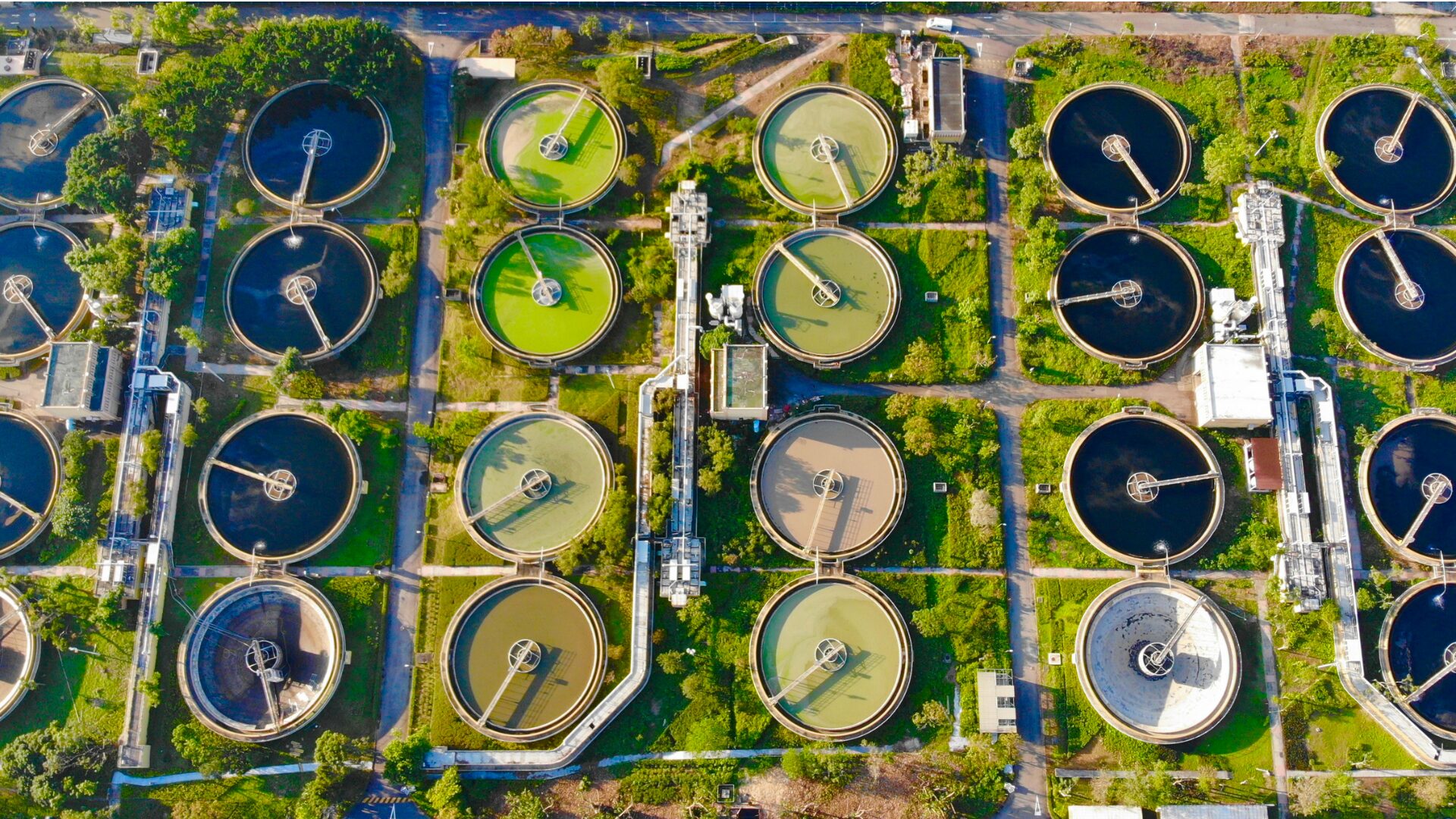Climate change is an urgent global crisis that requires immediate attention and innovative solutions. The consequences of climate change, including rising temperatures, extreme weather events, and ecosystem disruptions, pose significant challenges to the sustainability of our planet.
To combat this crisis, harnessing the power of artificial intelligence (AI) has emerged as a promising avenue. AI technologies offer the potential to revolutionize climate change mitigation and adaptation efforts, enabling us to create a sustainable future.
In this blog post, we will explore the role of AI for climate change and showcase how our product, Transcend Design Generator, can help asset owners and utilities accelerate capital projects and reduce project risk while contributing to a more sustainable future.
Understanding Climate Change
Causes and Effects of Climate Change
The climate crisis is primarily caused by human activities, particularly the burning of fossil fuels and deforestation. These activities release greenhouse gases (GHGs) into the atmosphere, trapping heat and leading to the warming of the Earth’s surface, resulting in global warming.
The effects of the climate crisis are far-reaching and impact various aspects of our planet, including weather patterns, ecosystems, and human health. Rising sea levels, extreme heat waves, droughts, floods, and the loss of biodiversity are just a few examples of the consequences we face.
Current Challenges in Mitigating Climate Change
Mitigating climate change poses several challenges.
One significant obstacle is the complexity of climate systems and the need for accurate modeling and prediction. Additionally, transitioning to renewable energy sources and adopting sustainable practices require careful planning and optimization.
Monitoring climate change and its impacts, managing resources efficiently, and assessing climate-related risks are also formidable tasks.
Fortunately, AI offers innovative solutions to overcome these challenges and drive progress toward a sustainable future.
How AI Works
Basics of Artificial Intelligence
Artificial Intelligence is a field of computer science that focuses on creating intelligent machines capable of simulating human intelligence and performing tasks that traditionally require human intelligence.
AI encompasses various subfields, including machine learning, deep learning, and natural language processing.
By leveraging large datasets and powerful algorithms, AI systems can learn, adapt, and make predictions or decisions based on the data they analyze.
Machine Learning and Deep Learning Algorithms
Machine learning algorithms enable AI systems to learn from data and make predictions or decisions without being explicitly programmed. Deep learning, a subset of machine learning, utilizes artificial neural networks inspired by the human brain. Deep learning algorithms excel at recognizing patterns and extracting meaningful insights from vast amounts of data. These algorithms play a crucial role in many AI applications in sustainability and related to climate change.
AI Applications in Climate Change
Climate Modeling and Prediction
Using AI to Improve Climate Models
Climate models simulate the Earth’s climate system, helping scientists understand past and present climate patterns and predict future changes. AI can enhance climate models by refining their accuracy and increasing their predictive capabilities. Machine learning algorithms can analyze historical climate data, identify patterns, and uncover complex relationships. By incorporating these insights into climate models, scientists can improve their accuracy and generate more reliable projections.
Enhancing Accuracy in Weather Forecasting
Accurate weather forecasting is essential for climate change adaptation and disaster management. AI techniques, such as deep learning algorithms, enable meteorologists to analyze vast amounts of weather data in real time, enhancing the accuracy of short-term and long-term weather forecasts. This improvement allows for more effective responses to extreme weather events, helping to mitigate their impact on vulnerable communities.
For example, in a recent study focused on improving climate models, researchers proposed a framework that utilizes physically constrained generative adversarial networks to enhance the simulation of precipitation patterns in Earth system models (ESMs). The challenge lies in accurately representing the complex processes and scales involved in precipitation.
Existing post-processing methods have been effective at improving local aspects of ESM simulations but are unable to address errors in modeled spatial patterns. The proposed framework addresses this limitation by simultaneously improving local distributions and spatial structure. The researchers applied their approach to the CM2Mc–LPJmL ESM, a computationally efficient model.
The results showed that the proposed method outperformed existing approaches in correcting local distributions and significantly improved spatial patterns, particularly in terms of the intermittency of daily precipitation. One common issue in ESMs, the double-peaked Intertropical Convergence Zone, was successfully eliminated.
The study’s findings highlight the potential of using generative adversarial networks and AI techniques to enhance the accuracy and realism of climate models. By improving the representation of precipitation patterns, scientists can generate more reliable projections and predictions, ultimately aiding in climate change adaptation and disaster management efforts.
Incorporating artificial intelligence into climate modeling and weather forecasting processes is a crucial step to fight climate change effectively. These advancements not only refine our understanding of past and present climate patterns but also provide us with more accurate predictions for future changes. By leveraging machine learning algorithms and deep learning techniques, scientists and meteorologists can harness the power of AI to improve the accuracy of weather forecasts, enabling more effective responses to extreme weather events and better protection for vulnerable communities.
Renewable Energy Optimization

AI-Driven Solutions for Optimizing Renewable Energy Production
Transitioning to renewable energy sources is a key strategy in mitigating climate change. AI plays a vital role in optimizing renewable energy production and increasing its efficiency. Machine learning algorithms can analyze weather patterns, energy demand, and grid conditions to predict renewable energy generation and optimize its integration into the power grid. This optimization helps reduce reliance on fossil fuels and enhances the stability and reliability of renewable energy systems.
Smart Grids and Energy Management Systems
AI-driven smart grids and energy management systems enable efficient distribution and consumption of electricity. By analyzing real-time data from smart meters and sensors, AI algorithms can optimize energy usage, balance supply, and demand, and detect anomalies or faults in the power grid. These intelligent systems facilitate the integration of renewable energy sources, enable demand response programs, and contribute to more sustainable and resilient energy infrastructures.
In a comprehensive study focused on large-scale renewable energy integration and decarbonization in multi-energy systems, researchers emphasized the role of artificial intelligence (AI) techniques in optimizing the operational control of renewable energy systems. The study highlighted the advantages of AI-powered approaches in various renewable energy sectors and their contribution to improving overall operational effectiveness. Practical applications of AI techniques were presented, showcasing their effectiveness through theoretical explanations and case studies. The study also addressed limitations and challenges associated with large-scale renewable energy integration and proposed further research perspectives. This valuable review guides stakeholders involved in the transition to net zero emissions, igniting the potential of advanced AI techniques for optimizing renewable energy integration and facilitating the global shift towards sustainable energy sources.
Utilizing Transcend Design Generator, a generative design tool, asset owners and utilities can further enhance their efforts in optimizing renewable energy production. This tool can leverage AI algorithms to analyze vast amounts of data, including weather patterns, energy demand, and grid conditions, to generate multiple design options for renewable energy systems. By evaluating these design options, asset owners and utilities can identify the most efficient and effective configurations for integrating renewable energy sources into the power grid.
Precision Agriculture
AI-Enabled Tools for Sustainable Farming Practices
Agriculture is a significant contributor to greenhouse gas emissions and resource depletion. AI-enabled tools and technologies support sustainable farming practices by optimizing resource allocation, reducing waste, and improving crop yields. Machine learning algorithms can analyze soil data, weather conditions, and crop health to provide farmers with actionable insights. These insights enable precise irrigation, optimized fertilizer usage, and early detection of diseases or pests, leading to improved sustainability and productivity in agriculture.
Climate Change Monitoring
Remote Sensing and Satellite Data Analysis Using AI
AI plays a crucial role in monitoring climate change and its impacts on our planet. Remote sensing technologies and satellite data provide valuable information about deforestation, ice melting, combating carbon emissions, and reducing embedded carbon footprint. AI algorithms can analyze these large datasets and extract meaningful patterns and trends, aiding scientists in tracking changes and evaluating the effectiveness of conservation efforts. Such monitoring is essential for evidence-based decision-making and targeted interventions.
Sustainable Transportation
AI-Based Technologies for Efficient Transportation Systems
Transportation is a significant contributor to carbon emissions and air pollution. AI-based technologies offer innovative solutions to improve the efficiency and sustainability of transportation systems. Machine learning algorithms can optimize traffic flow, reduce congestion, and enhance route planning, leading to reduced fuel consumption and emissions. Additionally, AI enables advancements in autonomous vehicles, electric vehicle infrastructure, and intelligent transportation management systems, revolutionizing the way we move people and goods.
For instance, in a research study focused on smart cities and the role of machine learning (ML) and artificial intelligence (AI), the researchers investigated how these technologies contribute to the growth and sustainability of urban areas. The study found that ML and AI play a significant role in various aspects of smart cities, with a particular emphasis on intelligent transportation systems. ML and AI technologies are utilized for tasks such as modeling and simulation, dynamic routing and congestion management, and intelligent traffic control. The research also highlights the application of ML and AI in other forms of transportation, including air, rail, and road travel. The study recommends the use of the agent computing paradigm for developing large-scale distributed systems in the context of geographically dispersed and dynamic transport systems.
Resource Management and Conservation
AI-Driven Approaches for Better Resource Allocation
Efficient resource management is critical for sustainability. AI-driven approaches facilitate better allocation of resources, such as water, energy, and materials. Machine learning algorithms can analyze consumption patterns, identify inefficiencies, and suggest optimization strategies. By reducing waste, optimizing resource usage, and promoting circular economy practices, AI contributes to a more sustainable and resilient future.
Conservation Strategies and Waste Reduction
AI technologies aid in developing conservation strategies and reducing waste generation. By analyzing data on waste generation, recycling rates, and environmental impacts, AI algorithms can identify areas for improvement and suggest interventions. These insights enable policymakers and private sector leaders to implement waste reduction measures, promote recycling initiatives, and minimize the environmental footprint.
Through its generative design capabilities, Transcend Design Generator can propose optimized designs and configurations for wastewater treatment processes. By considering factors such as energy efficiency, water usage, and waste reduction, the tool generates multiple design options that prioritize sustainable practices. These designs can include features such as efficient water recirculation systems, advanced filtration methods, and intelligent process controls.
Climate Risk Assessment
Using AI to Assess and Mitigate Climate-Related Risks
AI plays a crucial role in assessing and mitigating climate-related risks. Machine learning algorithms can analyze diverse datasets, including historical climate data, socioeconomic factors, and infrastructure vulnerabilities, to predict and evaluate risks associated with climate change. These predictive analytics enable governments, businesses, and communities to develop proactive strategies for disaster management, urban planning, and infrastructure resilience.
Predictive Analytics for Disaster Management
AI-powered predictive analytics can improve disaster management and response. By analyzing real-time data, including weather patterns, social media feeds, and sensor networks, AI algorithms can provide early warnings, track the spread of wildfires or floods, and facilitate timely evacuation plans. These applications enhance the effectiveness of emergency response efforts and help mitigate the impacts of climate-induced disasters.
Carbon Capture and Storage
AI Solutions for Carbon Capture and Storage Technologies
Carbon capture and storage (CCS) technologies are essential to reduce emissions. AI solutions can improve the efficiency and effectiveness of CCS processes. Machine learning algorithms can analyze geological data to identify suitable locations for carbon storage. AI can also optimize the capture and storage processes, minimizing energy consumption and maximizing the amount of carbon dioxide captured. These advancements in CCS technologies, driven by AI, help to achieve carbon neutrality and address climate change.
Advancements in Capturing and Sequestering Carbon Emissions
AI innovations are also driving advancements in carbon emission capture and sequestration techniques. By leveraging AI, researchers can develop new materials and technologies that enable more efficient and cost-effective carbon capture. AI algorithms can analyze vast amounts of data to identify optimal conditions for capturing and storing carbon emissions, improving the overall effectiveness of these processes.
Benefits and Challenges of AI in Climate Change
Benefits
Enhancing the Accuracy and Speed of Climate Modeling
AI technologies enhance climate modeling by improving accuracy and reducing computational time. Machine learning algorithms can process large volumes of climate data, identify patterns, and generate more accurate predictions. These advancements enable scientists and policymakers to make informed decisions based on reliable climate projections, ultimately leading to more effective climate change mitigation and adaptation strategies.
Optimizing Renewable Energy Utilization
AI-driven optimization techniques contribute to maximizing the utilization of renewable energy sources. By analyzing real-time data, AI algorithms can optimize the deployment of renewable energy systems, such as solar panels and wind turbines. This optimization ensures efficient energy generation, reduces reliance on fossil fuels, and accelerates the transition to a clean energy future.
Improving Resource Management and Conservation
AI’s ability to analyze and optimize resource usage supports effective resource management and conservation efforts. By identifying inefficiencies and suggesting optimization strategies, AI algorithms help reduce waste and promote sustainable practices. Improved resource management contributes to the preservation of natural resources, reduces environmental impact, and enhances long-term sustainability.
Challenges
Ethical Considerations in AI Decision-Making
As AI technologies become increasingly sophisticated, ethical considerations become paramount. The decisions made by AI systems must align with human values and prioritize the well-being of both people and the environment. Transparency, fairness, and accountability are crucial in ensuring that AI is used responsibly in addressing climate change.
Data Privacy and Security Concerns
The successful application of AI in climate change relies on the availability of vast amounts of data. However, this raises concerns regarding data privacy and security. Safeguarding sensitive data, ensuring consent and anonymization, and protecting against unauthorized access is critical to maintaining public trust in AI technologies.
Ensuring Equitable Access to AI Technologies
To harness the full potential of AI in addressing climate change, it is essential to ensure equitable access to these technologies. Bridging the digital divide, promoting inclusivity, and addressing potential biases in AI systems are necessary to prevent exacerbating existing social and economic disparities.
Future Prospects and Innovations
Emerging Trends in AI for Climate Change
The field of AI for climate change is continuously evolving, and several emerging trends show promise for the future. These include the integration of AI with Internet of Things (IoT) technologies to create interconnected systems for climate monitoring and resource management. Additionally, advancements in explainable AI and interpretable machine learning algorithms will enhance transparency and trust in AI decision-making processes.
Collaborative Efforts and Interdisciplinary Research
Addressing climate change requires collaborative efforts and interdisciplinary research. The convergence of AI with fields such as climate science, ecology, and economics enables holistic approaches to tackling climate change. Collaboration between researchers, policymakers, industry leaders, and communities is crucial to drive innovation and ensure the effective implementation of AI solutions for climate change.
AI for Climate Change: Paving the Way Towards a Sustainable Future
The urgency to address climate change requires innovative and effective solutions. AI has emerged as a powerful tool for tackling the complex challenges we face. By leveraging AI technologies, such as machine learning and deep learning algorithms, we can enhance climate modeling, optimize renewable energy production, improve transportation systems, and enable efficient resource management. AI-driven solutions, like Transcend Design Generator, contribute to accelerating capital projects, reducing project risks, and promoting sustainability in wastewater treatment plants and substations
Let us take action now and harness the potential of AI to safeguard our planet for generations to come.








 WWTP Design
WWTP Design  Substation Design
Substation Design  Utility Interconnection Hub
Utility Interconnection Hub  White Label Proposal Generator
White Label Proposal Generator  PFAS Feasibility Study
PFAS Feasibility Study  Booster Station Design
Booster Station Design  Value Discovery Program
Value Discovery Program